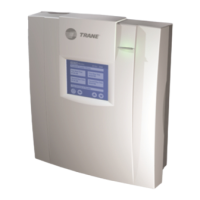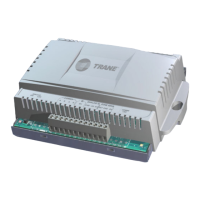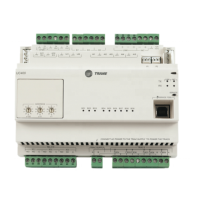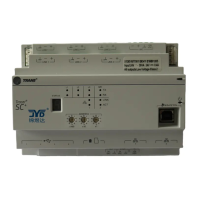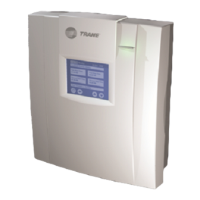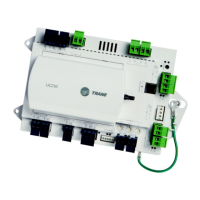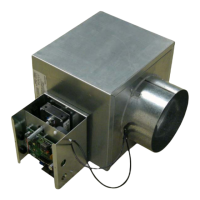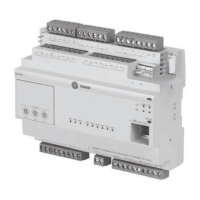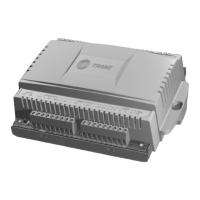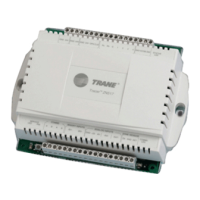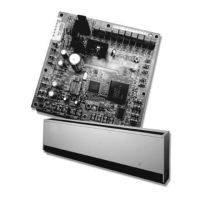CNT-SVP01C-EN 93
Chapter 8
Using the Occupancy and PID
blocks
This chapter discusses the Occupancy block and the PID (proportional,
integral, derivative) block. For more information about specific TGP
blocks, see the block reference in the online Help.
Using the Occupancy block
The Occupancy block outputs the occupancy request as received by the
Tracer MP580/581 controller. (For more information about the occupancy
request arbitration, see Table 2 on page 62.) Use the Occupancy block in
graphical programming to determine the values and states of the analog
and binary outputs on the Tracer MP580/581 controller. This section dis-
cusses common uses of the Occupancy block in different program exam-
ples.
To be useful, the Occupancy block must be used in a TGP program. Four
examples are shown in this section to aid in program design for two typi-
cal applications of the Occupancy block: fan request and setpoint adjust-
ment.
The Occupancy block has an enumerated output. The enumerated value
and mode are shown in Table 6. These values follow the SCC and DAC
standard.
The following sections contain examples of how the Occupancy block can
be used in a TGP program. The examples begin as simple as possible and
Table 6. Occupancy block enumerated values
Output value Mode name Notes
0 Occupied
1 Unoccupied
2 Occupied
bypass
This mode is the equivalent of a timed over-
ride request. It is considered an occupied
mode.
3 Occupied
standby
This mode is meant to be used for a space
that is currently unoccupied but will be occu-
pied soon. Meeting rooms are a good exam-
ple. Typically, this mode has different
setpoints than the occupied or unoccupied
modes.
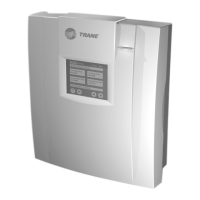
